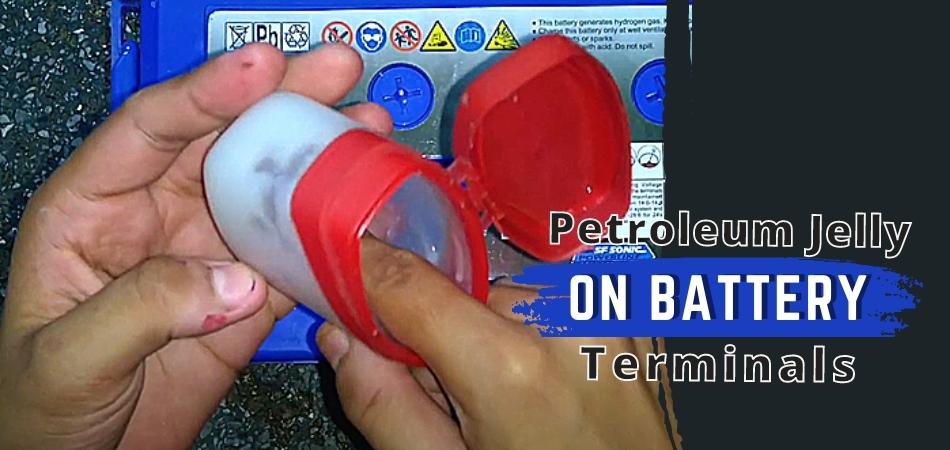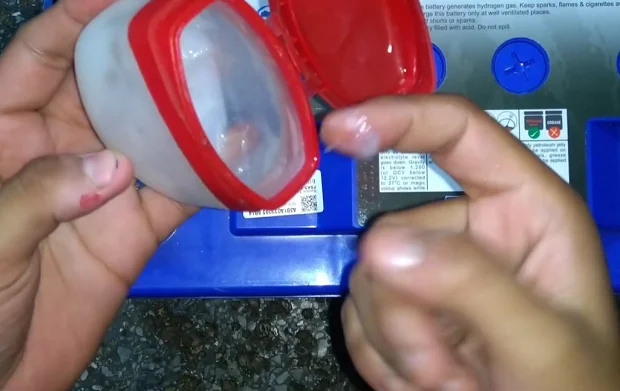Hi, I'm Luis Johnson, an automobile technician, and power equipment professional. By profession, I'm a businessman and operate a car workshop. I have created this...Read more
Let’s face it, corrosion in battery terminals are a hell of a hassle to deal with. One of the most useful ways to give it a worthy fight is by using petroleum jelly. Turns out, it can prevent corrosion on the battery posts, but you have to use it right.
But you might have a question even prior to the applying process; that is, how it prevents corrosion in the first place!
Well, Petroleum jelly is a hydrophobic material that prevents the terminal and posts from the humidity and atmospheric oxygen that ultimately keeps it safe from corroding. If this sounds complicated, no worries, we’re about to discuss it all below.
Let’s give you a definitive guide on how petroleum jelly on battery terminals helps in car battery maintenance, and how to use it for the best output.
Corrosion and Petroleum: Understanding the Relation
Here’s what corrosion is:

Corrosion on battery posts and terminals is the primary sign of overcharging. If you have colorful sulfation on the posts or the terminal, chances are, you’re charging the battery more than you consume.
The corrosion develops on the posts from the hydrogen reaction that emits from the sulfuric acid inside the battery. Vaporized electrolyte leaches to the surface as you overcharge. Then it reacts with the open air, humidity, and of course, the metal posts themselves.
Here’s what Petroleum has:

Since petroleum is a hydrophobic material, it prevents corrosive reactions on the surface it’s applied. As the primary usage of it suggests, when you apply petroleum jelly to your skin, it keeps you safe from cracking skin.
What it does to a battery post is, that it seals off the existing moisture onto the metal connecting surface. That way, the hydrogen, the leaching electrolyte cannot react with the metal post and corrode the area.
Petroleum Jelly on Battery Terminals: Why Do People Use It?

Now that you know the primary role of petroleum jelly, you can understand why people use it on battery posts as an anti-corrosive agent.
Using petroleum jelly on a battery post will help you take better care of your battery and have less hassle to deal with down the line. If you don’t apply petroleum or other similar treatment on the battery posts, you’ll surely have to clean corrosion too often.
When you clean the battery terminals once and put things back together, you’ll apply petroleum to the connecting points. This way, you can lengthen the period of developing corrosion if not prevent it all together.
How Does It Prevent Corrosion?
So, you apply petroleum on the posts, and you prevent the corrosive phenomenon. But how does petroleum work anyway? What’s the technical aspect of it? Well, here’s what you’re actually doing when applying petroleum on battery posts:
The purpose of connecting the terminals and battery posts is to let electrical current flow from positive to negative. When you charge the battery more than you discharge, there’s an imbalance in the flow.
Here, the petroleum jelly allows the current flow easier and thus prevents sulfation, or corrosion as we call it. It does the same results you can achieve by applying anti-corrosive silicone spray.
When and How to Apply Petroleum Jelly on Battery Terminals?
Before you apply petroleum jelly on battery terminals, you need to clean the existing corrosion off the battery. If you skip ahead and apply on the corroded terminal, it will continue corroding, and the petroleum won’t work.
Preparation and supplies:
Before you get your hands dirty, here are some preparation to take, and some tools that you’ll need:
- Have your protective goggles and gloves on
- Don’t work on a battery that’s still connected to the ECU
- You’ll need a torque wrench (An adjustable wrench is discouraged)
- You’ll also need a battery terminal and post cleaner (sandpaper also can do)
- Cleaning rag (Microfiber cloth is preferable)
- Ordinary petroleum jelly that we use on our skin
Here are steps you’ll follow to clean the battery post corrosion, apply petroleum, and keep the system functioning:
Clean The Battery

First off, disconnect the connections off the battery and take the battery off its place if possible. Put 3/4 cup of baking soda into 2-1/2 cups of warm water and make a mixture. While the lids are sealed, pour the mixture on the lid surface and clean the corrosion and residue with a toothbrush.
Once cleaned, you can now wipe off the baking soda and wipe the surface clean before the next step.
Scrap The Posts

Take a battery connector cleaning tool, and scrap off the existing corrosion, and other build-ups with that. Be sure to clean the inner circle of the terminals as well during the process. This way, you will ensure the posts and terminal have a proper electrical connection between them.
Apply Petroleum Jelly

The last step is to apply a generous coat of petroleum jelly to the battery posts. Dip your fingers into any petroleum jelly (that you use on your lips) and apply a coat on the posts. You have to apply it on both the positive and the negative posts of the battery.
Tighten And Put Together

Once the layer of petroleum is applied, you can now tighten the posts with a torque wrench and put everything together. Use a torque wrench instead of an adjustable one as you have more control over the torque this way. Also, don’t forget to clean the battery bay if it has dust, dirt, and corrosion that fell into it.
Read Also: Can You Use Dielectric Grease on Battery Terminals?
Last Words
The copper sulfate lead will always react with the sulfuric acid and try to form corrosion on your battery posts. Keeping the corrosion at bay and keeping yourself away from the hassle of cleaning your battery every few weeks is possible.
That only if you apply petroleum jelly on battery terminals or other sealant sprays that let the current flow freely without corroding the battery. To prevent corrosion from the core, you need to keep a balance between discharge and recharge cycles. Try to discharge as much as you recharge.

Hi, I'm Luis Johnson, an automobile technician, and power equipment professional. By profession, I'm a businessman and operate a car workshop. I have created this site Batteryquery to help people purchase the right battery for their vehicles. The reason behind creating this site is to help my customers purchase the right car battery who often purchase the wrong one due to their lack of knowledge.
More Posts